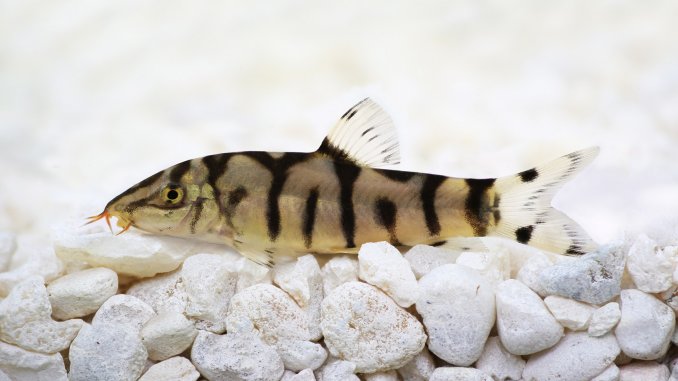
The yoyo loach is an interestingly colored loach that brings energy and activity to your tank. Their dark bands with light blue tint contrasts against their silver bodies creating a really interesting look.
This fish is generally peaceful but is known to fight with members of their own species. They do well with other fish that are peaceful and can even stand their own with more aggressive fish.
Their temperament makes them a perfect addition to many tanks. They are both active and interesting to look at.
If you are thinking about one of these for your tank, use this guide to learn how to set up the perfect tank, what to feed them, and which fish you can keep them with.
TABLE OF CONTENTS
Yoyo Loach Facts & Overview
| Category | Rating |
| Care Level: | Intermediate |
| Temperament: | Peaceful |
| Color: | Silver body and black patterns |
| Lifespan: | 5-8 years |
| Size: | Up to 2.5 inches |
| Diet: | Omnivore |
| Family: | Botiidae |
| Minimum Tank Size: | 20 gallons |
| Tank Setup: | Many plants and wide areas to swim and hide |
| Compatibility: | Community tanks (Peaceful and semi-aggressive) |
The Yoyo Loach goes by the scientific name Botia almorhae, and is also known as the Almora loach. This name is more representative of the fish, but Yoyo stuck as the common name.
Originally from Pakistan, this fish also earned the name Pakistani Loach.
The common name, Yoyo Loach, was given to these fish after photographer Ken Childs noticed how much these fish resemble the child’s toy as they move up and down in the water column. They also appear to have a “Y-O-Y-O” pattern on their sides.
These fish come from the family Botiidae. However, they used to fall under the family Cobitidae (back when loaches were only split into two groups: Cobitidae and Balitoridae).
A few studies carried out on loaches led to reclassification, and loaches are now divided into five families: Balitoridae, Botiidae, Cobitidae, Nemacheilidae, and Vaillantellidae.
They are extremely diverse and widespread throughout Asia and the Middle East. Native populations are thriving due to how widespread both their species and family are.
One thing that makes them different from most loaches is the fact that they are not nocturnal and will be active during the day. Once acclimated to a tank, your fish will be active around the bottom of the tank, looking for food in crevices or on the substrate.
Typical Behavior
These fish are active during the day and will constantly be looking for food. This energy brings a lot of life to the bottom of your tank.
These inquisitive fish however will keep to themselves, this is the reason that they will do so well with so many fish. This does not mean that they are shy though; they will interact with other fish and will stand up for themselves if needed.
They are known to be semi-aggressive to members of their own species but this doesn’t mean they cannot be kept together. Like with other species that show dominance, having a group of 5 or 6 individuals will mean that no one fish will be bullied to the point of harm.
They will spend the majority of their time foraging for food at the bottom of your tank, or hiding out in caves and planted areas.
Appearance
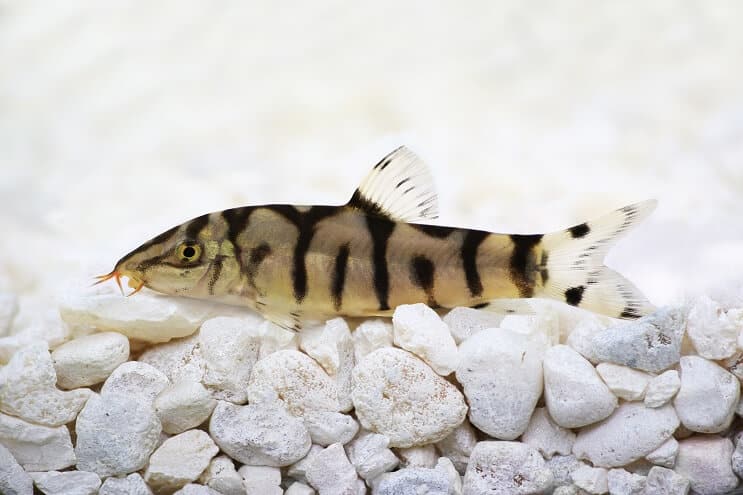
It is hard to talk about this fish without mentioning their coloration. At first glance, they seem to look like the Zebra with the black stripes and white contrast.
While it is funny to think of a Zebra with gills, these fish are much more unique when it comes to their pattern.
These black bars are separated by silver scales and a black dot. The bars are not solid and split on their dorsal side. This gives them the “Y-O-Y-O” look, quite literally looking like they have the letters Y and O written on the sides of their body.
The way their color works however, is similar. As the fish moves in groups along the substrate, the bars confuse any predators.
These fish are not just black; they are known to display a beautiful blue from the edges of their black bands.
Their long and slender bodies show off the pattern well. Their fins are mostly translucent and they have a forked caudal fin.
They have a small pointed head with a ventral mouth that has short barbels. These are not as fine-tuned as catfish but they do help them search for food, much like Corydoras.
They grow to around 2.5 inches in length, and up to 6 inches in the wild.
Habitat and Tank Conditions
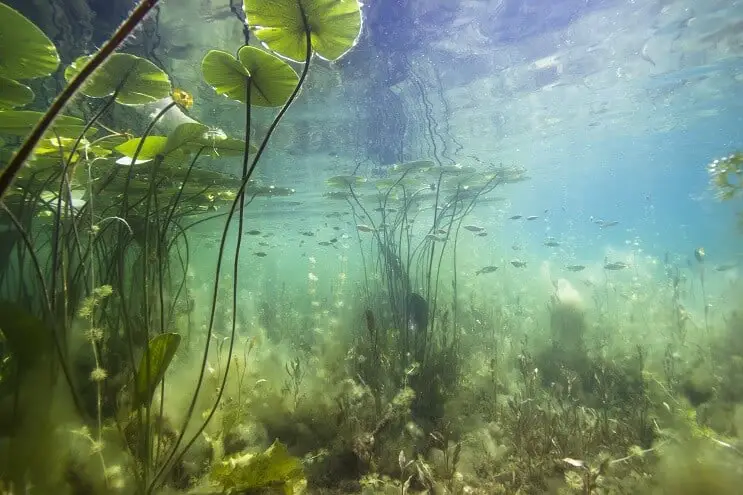
These fish are found in large numbers in India and Pakistan. Because of how common these fish are, they are listed as “least concern” on the IUCN red list.
They are a riverine species by description but prefer water that is slow moving/relatively still.
Yoyos congregate in small pools or bends in the river where the bed is mostly rocks. This lets them search for larger bits of food easier.
These fish will stay to the bottom and sometimes the middle of the water column. It is rare that they will be seen at the surface. In the wild they have large areas to swim in, and lots of places to hide (rocks and plants). They are very active and will constantly dart from open water to hiding.
Tank Conditions
Even though they are hardy fish, they still need stable water conditions. The following water parameters should be maintained:
- Temperature: 75.0-86.0°F
- pH Range: 6.5-7.5
- Hardness Range: 3-10 dGH
Keeping these conditions constant is important to keep these fish happy and healthy.
They prefer large gravel or small rocks for substrate as it is easy for them to search for food.
As they prefer slower moving water you can use either an under-gravel filter or canister filter. This will oxygenate the water and help to keep the tank clean. Plants work very well with these fish as it gives them lots of natural cover. They are constantly searching and exploring so giving them plenty of crevices and roots to move through is a good thing.
One thing to note is that these fish can jump from the tank. It is important that you have a solid fitting lid on your talk.
What Size Aquarium Do They Need?
Yoyo Loaches need at least a 40 gallon tank. When they are young these fish will be fine in a 20 gallon aquarium, but as they get bigger, they will need more space.
How Many Can Be Kept Per Gallon?
For each Yoyo in your tank you need to add 10-15 gallons per fish. So four would need a minimum tank size of 70 gallons.
Tank Mates
The Yoyo Loach is an interesting fish that can go with so many other fish. Having the right fish together means you will have a happy community. In aquariums this means that all of your fish are healthy, but in wild ecosystems it means much more.
The general rule is to keep them with peaceful fish that are generally the same size or smaller.
Your loach will keep to themselves most of the time at the bottom of the tank. This gives you plenty of opportunities to fill the middle and surface of the water column with any fish that you want.
Good tank mates include:
Make sure to avoid fish that are aggressive such as Cichlids (Oscars and Jack Dempseys). Also avoid larger semi aggressive fish, such as:
- Tiger Barbs
- Bettas
- Red Finned Sharks
- Tiger Fish
- Peacock Bass
Don’t add Yoyo Loaches to tanks that have lots of snails or shrimp; they will eat them!
This is good if you are trying to get rid of a population of snails but not good if those snails are a welcomed addition to your tank.
They may not show aggression to some shrimp, especially cherry shrimp due to their size. But they should be monitored over the first few days to make sure they go well together.
Keeping Yoyo Loach Together
Yes, you can keep them together, however you need to keep them in a group of 5 or 6.
The problem with these fish is their need to show dominance. This can lead them to bully other members of their species. Having a group will help to spread out this dominant behavior.
Diet
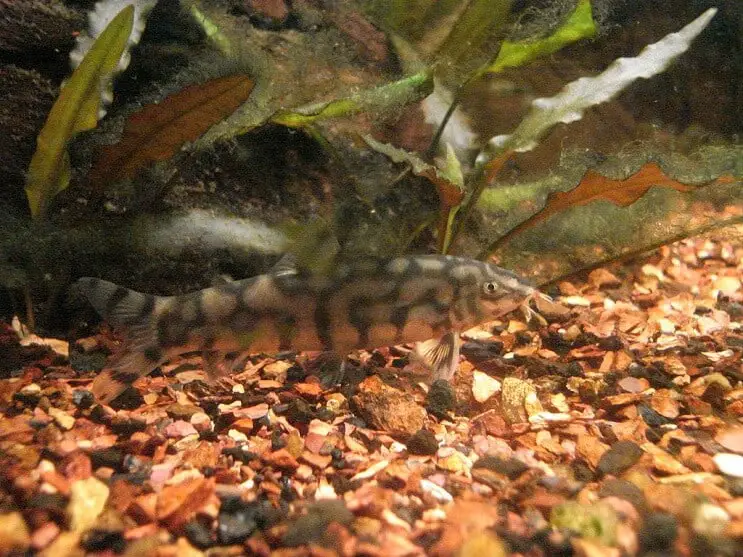
In the wild these fish are scavengers. For an ecosystem, this organism is incredibly important and often overlooked.
They use their time to explore their surroundings and find food wherever they can. They are also known to eat small crustaceans, insect larvae, and even plant matter from time to time.
In a tank, this means that your job is super easy. These fish will eat pretty much anything that you put into the tank.
Feed them brine shrimp, daphnia, and some vegetable foods such as algae wafers to keep their diets varied. Using artificial flakes or pellets works just fine for most of the time but adding these into their diet every few days makes sure things don’t get boring and they have the correct nutrients.
Remember that these fish are bottom-to-mid dwelling fish, this means that the food you feed them must eventually get to them (sinking wafers are a good example).
Try putting their food in different spots every time too, this will give them a little challenge every time and prove some excitement for these inquisitive fish.
Care
Loaches have a rough time when it comes to disease. Generally, they have thin and small scales that means they are more likely to catch diseases.
This also means that they will react to medication differently.
If your fish become sick, a separate quarantine tank is a must. This should mirror the original tank conditions and give them space to get healthy.
One of the most common sickness in these fish, and other fish, is ich (also called the white spot disease). It is caused by a parasite and causes small white spots to form over the fish’s fins and body.
Loaches are typically the first to get it due to the lack of protection from their smaller scales. It also means that they will need to only be exposed to about half the normal amount of medication.
Always remember that you can bring diseases into your tank from so many different sources. It is crucial that you change the water regularly and know exactly what is going inside your tank. Another good tip with these fish is never adding them to un-established tanks. Tanks that are new tend to have fluctuating water conditions and levels of bacteria and even parasites.
Give your tank time before adding these fish in order to make sure that they will stay happy and healthy.
Breeding
The Yoyo Loach is a fish that is incredibly difficult to breed in captivity.This is likely since they may swim upstream prior to spawning; fish that require migrations are almost impossible to breed in captivity.
Taking fish from wild populations can lead to problems with sustainability.
Males and females are slightly dimorphic when at mating age. Males tend to be slimmer in the body than females.
Their blue colorations that come off the black bars may also be a sign of sexual maturity but this is still not fully understood yet.
Are Yoyo Loaches Suitable For Your Aquarium?
So after all this, the answer is simple. If you are ready to keep water conditions as stable as possible then these fish might just be perfect for you.
Watching water levels and keeping them at one level is not easy. It does require a lot of time and close observation.
If you do not have as much time or are still learning the ropes, then consider a Zebra loach. They are beautiful fish that add so much color to your tank. They are also incredibly hardy and do not respond to fluctuations as much as the Yoyo Loach.
Are you thinking of adding a Yoyo Loach to your tank? Let us know in the comments section below…

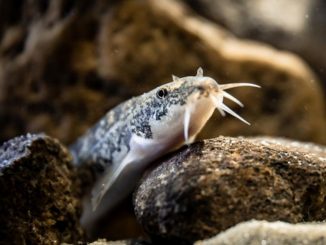
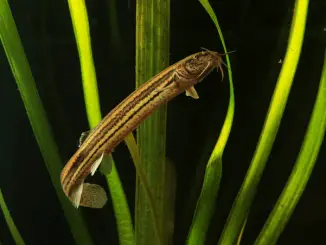
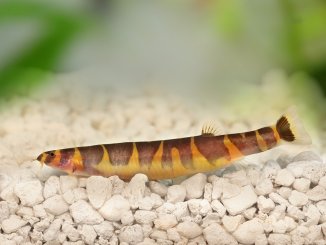
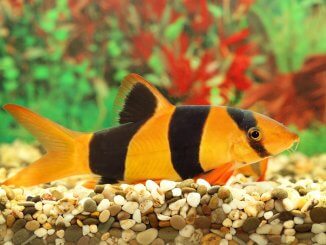
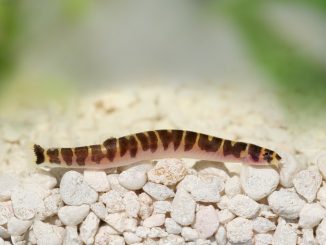
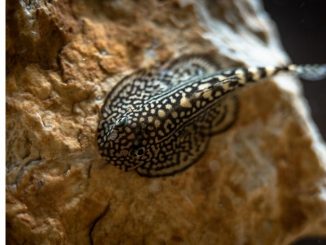
Will I have to upgrade eventually I have a 20 gallon with 3 hatchets 4 tetras a yo-yo loach and Khuli loach and I’m gonna have fry maybe
I added a yoyo loach to my tank that already had mollies in. The yoyo attacked each one and now is the only thing in my tank. I’m afraid to add more fish incase it attacks them
Hi Dawn, unfortunately there are always anomalies in the way a species generally behaves. It may be that your Yoyo is too aggressive to house with anything else. Do you have plenty of plants and places for your Yoyo Loach to hide out and feel comfortable? Thanks, Robert
I have bought a new tank and Pakistani louch only fish left in present one how will he survive until I set up new one ………..with current heater being turned off and waiting for new one to reach tempature and get water conditions right for transfere?
Really. I have been keeping yo-yos for years and never seen them attack other fish, while they do bicker amongst themselves I have found them to be very peaceful and entertaining fish. they are also great at cleaning snails from the tank which helps maintain plants. I wouldn’t be without them.
I had snails invade my tank … must have been introduced by a plant ?? Anyway was told Yoyo would do the job. I had neon tetras and a bristle nose and introduced the 2 yoyo’s. It has been almost 2mths and they have settled, been a great introduction, snails were gone very quickly and love watching them.
Thank you Robert for this article it was helpful . I like to fully understand the needs of animals in my care . We have two different schools of four YO YO loaches and enjoy them . I wanted to know if they breed readily , so your writing and the general consensuses is not in an aquarium , oh well … I did learn that they do exit an open door on a glass top . Fortunately and to my amazement my 92 year old mother-in-law staying with us saw him flapping around on the floor , She returned him to one of the 125 gallon aquariums full of large Oscars , she has dementia so I thought she was mistaken about the rescue . I realized in a day or so that there were only 3 loaches in the correct aquarium . Not knowing where she put the missing one I gave it up for lost . A few days later i was eating and could see the Oscar tank and thought i saw a flash of silver , sure enough the yo yo was in there hiding in the rocks . I netted him pretty quickly . To my surprise he dodged the Oscars and he was in good health no injuries visible and has been fine ever since …about a month now . Just thought i would share . BTW i wouldn’t believe this if i didn’t see it either lol . Thanks again for your article.
Are yoyo loaches invertebrates? i have two that chase each other around usually after they eat(is that playing) Anyways they are by themselves and algae has taken over the tank? Is that due to a living room lamp right next to them? I bought some algae control treatment and it says not to add to a tank with invertebrates
Invertebrates include species like snails, shrimp and even jellyfish, I guess they can’t handle the chemicals
Fish have scales but I’d be careful with you loach because they don’t have hard scales like other fish do, so add it sparingly
My loaches at feeding time will swim upside down at the surface of the water and snag blood worms from other fish.
I have two of these which were gifted with my tank. I decided to get frogs. I have had 3 in the tank. I found 1 dead then the other night i seen one of my yo-yo lurch swimming round the tank with one in its mouth. I was traumatised so decided to put the last frog into another tank. I would love to know if these are known to kill frogs. Thanks for any advice.
decent guide but major error on Temperament.They are SEMI-AGGRESSIVE. I have Yoyos and spoken to other owners/shops about them and they agree.
Two of my yoyo loach’s stomach are already so huge that seems it contains lots of eggs the stomach area is just so wide (looks like pregnant) for more than two months but still did not see them laying eggs. I can send the picture if you want to take a look at it.
You may be overfeeding them. They don’t seem to have an “off” button when eating, so try decreasing the amount of food they get and see if the swelling goes down.
I have three of these loaches and one does appear to be pregnant. So what is the procedure, etc.? Is it possible? Do they eat their young? How many might be expected? Rob
I bought a single yo yo not too long ago for a tank smaller than it needs. It is still very small bug I was misguided by the pet store employee. I don’t have any way to return it nor any friends with fish tank. It doesn’t cause a problem with the other fish in the tank but I want to know if getting some smaller bottom feeder fish would give it at least a bit more comfort in its out of place home.
I got a 29 gallon tank with lots of plants and decor. I have 3 yo yos (Zip, Zap, Zop) they seem to love it and explore everywhere. The only other fish is a dwarf flame gourmai (jasper) and I’m thinking of adding some cherry barbs down the road.
I have yoyo loach in with african cichlids catfish n plecos never had any problems my yoyo been in my tank years
I have 3 yoyo’s with Cory’s, discus, rummynose tetras an anglelicous pleco.
1 goes from looking like a balloon with a head n tail an rocks when she swims then stops on the sand, the other 2 are streamlined guessing males they are about 3-4 inches I find largeish yellow eggs routinely scattered all over the rocks an tubes about 1x a month this coincides with my what a presume female yoyo getting smaller less like she’s swallowed a ping-pong ball.
They are 2-3 years old wondered if anyone else had this happening
Keep to themselves my ass. They are hyper and love to check out everything any other fish is doing. Slightly remind me of a toddler on sugar.
I have a yo yo that had a snail job but is now in retirement! Snails infiltrated my tank via live a couple of live plants. It will take a little while to het rid of the snails because there will be a small hatching every two weeks until they are gone. My yo yo did its job well and lives happily with a panda cory and ember tetras. He has a special sleeping space under a rock that it once used to hid in! I feed it a sinking pellet to keep it happy, since the snails are no longer found as a snack.
I dont see them attacking anything but my tiger barbels are loosing their fins and not doing well in general.I was thinking its some disease,I used all possibble medicine and then in pet store I was told its yoyo loaches doing to them at night when they sleep.I was suggest get rid off them becouse I will not be able to have any other fish in tbe future.But they are so cute I can not.And I read totaly different information about them here.I was suggest give them more sinking algae pallets as well what I am doing now.Becouse they are eating everything and all the time I was not thinking they need algae pallets.Store owner told they may be hungry.I had ruby shark in the past and the only fish he hated was tiger barbels as well.I sacrifice my tigers I think.All other fish are doing fine.
Hello, thank you for this beautiful guide about YOYO aka Pakistani Loaches. But kindly I would like to suggest an edit, they are mostly found in Nepalese and Indian water more than Pakistan. Not sure why they recieved Pakistani loaches as their name, may be because they were first found in Pakistan or they migrate to Pakistani rivers for breeding but they’re more common in river bodies in India and Nepal. Beautiful creatures though, I really admire this website because I love to read about aquarium fish, whether I keep them or not 🤷♂️😬
I have 7 in a 32 gal with clown loaches, angels, cory cats. They are so much fun to watch. Very busy fish.